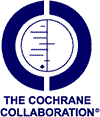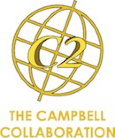The Icelandic Prevention Model (IPM): application of environmental prevention principles based on a systematic local assessment of risk and protective factors
At a glance
Country of origin
- Iceland
Level(s) of intervention
- Environmental prevention
The Iceland Prevention Model (IPM) is an environmental, community approach that focuses on the analysis of risk and protective factors in each community and building a coalition of stakeholders in order to find common community goals and an organised response to change the social environment. According to this analysis and data collection at a local level, the Icelandic Prevention Model implements evidence-based environmental principles with those coalitions. This, with the support of a particularly strong alcohol policy, might have contributed to the reduction of substance use in Iceland.
Links to this programme in other registries
Implementation Experiences
Read the experiences of people who have implemented this programme.Contact details
Dr. Alfgeir L. Kristjansson; Dr. Inga Dora Sigfusdottir; Jon Sigfusson
Planet Youth | ICSRA
Jon[a]planetyouth.org
www.planetyouth.org
Overview of results from the European studies
Studies overview
While this intervention appears to be promising due to its population-level outcomes concerning substance use among youth in Iceland, the authors report that it remains unclear whether and how the intervention and its components impacted substance use in Iceland (Kristjansson et al., 2010 and 2016).
The programme aims at reducing individual risk factors and promoting individual protective factors but it remains unclear whether and how these outcomes are related to the intervention components. The core characteristics of the interventions (e.g. dosage, logic model etc.), besides their community aspects, are not described in the available studies. Subsequently, it is unclear which interventions or actions were offered and implemented. Furthermore, there is no systematic monitoring and subsequent analysis available on the changes in the community context (besides substance use). For instance, no direct linear link was documented between participation in sports activities and the decrease in the prevalence of substance use among youth.
The Kristjansson et al. (2010) study has a quasi-experimental design, where the effects however are small. Other issues: 1) It is unclear how the control group was impacted by the overall Icelandic alcohol policy, in the currently available studies, 2) The fact that five communities were excluded from the intervention group could imply fidelity and dosage issues that are not accounted for and considerable dropout. Included were only communities that participated fully and many years in the intervention, 3) There is no analysis of baseline differences such as socio-economic status, 4) The measured outcomes do not relate to the intervention components or the logic model, 5) The analysis, as pointed out by the authors themselves, does not ascertain a causal relation between the intervention and the outcome.
The 2016 study (Kristjansson et al. 2016) could not be included in the assessment as as it is a repeated cross-sectional study of population-based school surveys, with seven waves of pooled data, and it is unclear whether it is an ITS and how many data assessments were conducted prior to the intervention. Thus, as mentioned by the authors, the study faces issues such as the inability to dismiss secular trends in adolescents’ substance use and the coexistence of the intervention with other, unmonitored interventions.
Other promising recently published studies (Asgeirsdottir et al. 2021; Kristjansson et al. 2021; Meyers et al. 2023), face similar problems, as they are repeated cross-sectional studies, and due to the study design it cannot be determined whether there is a causal effect or if only correlational relationships can be considered. Some of the main limitations of these studies are insufficient data points before and after the intervention, lack of detail on what is implemented and when, and unclear comparability across samples.
What to improve: future studies should provide a more in-depth description of the components and delivery modes and perform better monitoring of dosage and fidelity. Also, the changes in the targeted behaviours (other than substance use) could be assessed to understand the active ingredients in the logical model. Additionally, baseline equivalence and attrition should be included in the evaluation method to account for differential impact. These methods would help other countries to effectively reproduce the effects, test the logical model and adapt the design to new contexts.
Countries where evaluated
- Iceland,
- Lithuania,
- Spain
Characteristics
Protective factor(s) addressed
- Community: Laws and norms unfavourable to substance use and antisocial behaviour
- Community: opportunities and rewards for prosocial involvement in the community (including religiosity)
- Environmental economic: Opportunities for supervised/organised leisure time
- Environmental: Curfew outside hours for minors
- Environmental: Enforcement strategy in on-site alcohol-selling premise
- Environmental: RBS (Responsible Beverage Service) available
- Community: other
- Family: attachment to and support from parents
- Family: Limited or no Availability of alcohol at home
- Family: opportunities/rewards for prosocial involvement with parents
- Family: Parental monitoring (supervision)
- Individual and peers: interaction with prosocial peers
- Individual and peers: opportunities and rewards for prosocial peers involvement
- Individual and peers: regular exercise
- School and work: commitment and attachment to school
Risk factor(s) addressed
- Community: laws and norms favourable to substance use and antisocial behaviour
- Environmental physical: Lack of opportunities for participation in positive and prosocial development
- Environmental: Lack of community youth monitoring (unsupervised parties; unstructured/unmonitored leisure time)
- Individual and peers: early initiation of drug/alcohol use
- Individual and peers: favourable attitude towards alcohol/drug use
- Individual and peers: interaction with antisocial peers
Outcomes targeted
- Truancy – school attendance
- Positive relationships
- Relations with parents
- Relations with peers
- Other relationships (community, school)
- Substance use
- Alcohol use
Description of programme
Cohort studies in Iceland (Kristjansson et al., 2010, 2016) offer correlational evidence that three factors may have contributed to the reduction of monthly drinking rates as part of the IPM in Iceland: 1) parental knowledge of how and with whom their children spend the afternoon and evening, 2) knowledge of parents of who the (parents of) friends of their child are, and 3) a minimum of doing a team sport 4 times a week.
The objective of the Icelandic Prevention Model (IPM) is to strengthen community protective factors in school, family, peer group, and leisure time contexts. For example, parental monitoring, co-communication, and social involvement of parents, and participation of adolescents in organised sports to decrease risk factors such as adolescents' party lifestyles and unsupervised idle hours. The IPM model consists of 5 guiding principles: applying a primary prevention approach, emphasising community action, empowering community members through practical decisions based on available data integrating different stakeholders at the local level, and enhancing appropriate long-term interventions based on community resources.
The IPM model consists first of all in the identification of key adolescent risk and protective factors in communities. Some of the respective steps (10 in total) are for example:
- The formation of collaborative coalitions between ICSRA researchers and persons specified by each municipality, including policy makers (elected officials and municipal employees), community leaders, practitioners (e.g. school personnel and youth workers), and parents that become responsible for implementation of local-level activities.
- The identification of key adolescent risk factors (e.g., idle hours and attendance at unsupervised parties) and protective factors (e.g., parental monitoring and participation in sports), based on local survey results and followed by grass-roots action organised by the local community coalition to reduce risk factors and strengthen protective factors.
- Individualised reports are supplied to each municipality, describing local trends in substance use, changes between years, and risk and protective factors suggested by analyses of the results for each local community. The findings in these reports are presented and discussed at local meetings with all members of the coalition, and prospective action plans are initiated or revised. This cycle of survey, analysis, reporting, consultation, and action is then repeated annually.
The 10 steps model is similar to the steps in community prevention systems such as CTC or PROSPER.
The intervention elements implemented in Iceland were a) the promotion of parental monitoring and family dinners: parents are encouraged to spend more time with their offspring and to know where, and with whom they are, b) so-called leisure vouchers (for e.g. sports or music clubs) as particular identifiable element: supervised leisure time, and c) curfew hours for minors (22:00 in winter, midnight in summer).
In Iceland, the model operated on an advantageous background of a) a strong national alcohol policy in Iceland and b) overall strong social norms and cohesion in this society, which in turn facilitated the implementation of curfew hours and promoting changes in parental behaviour.












